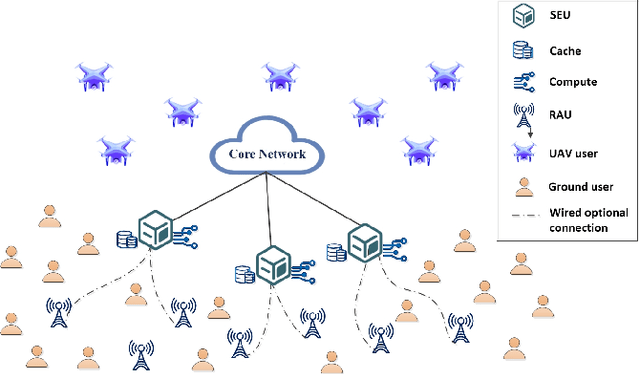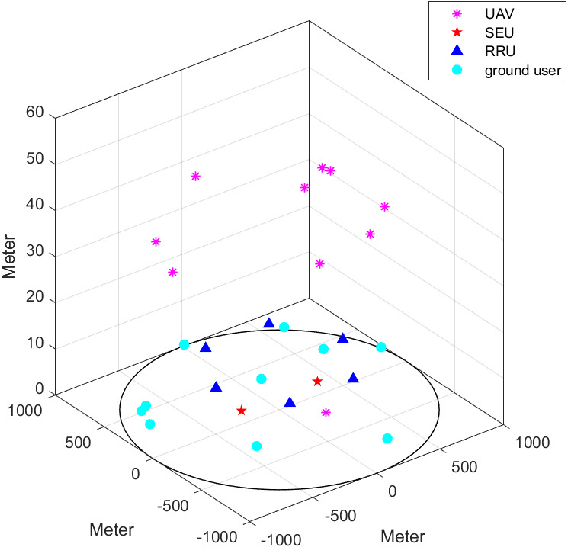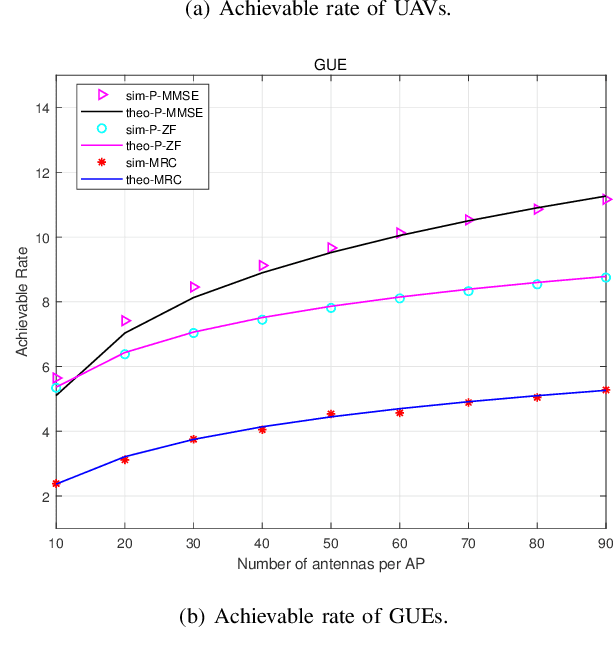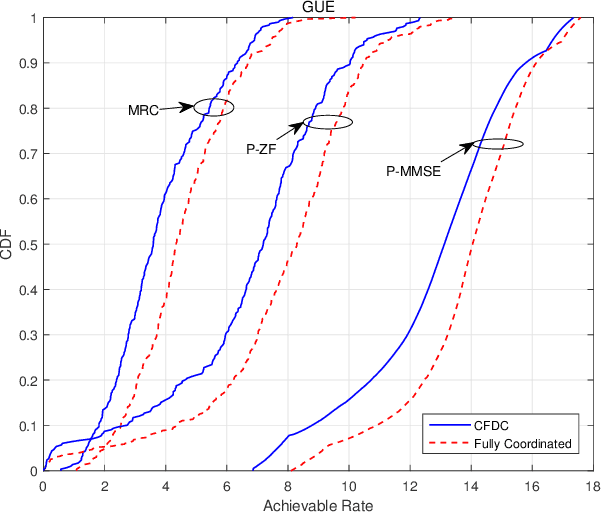Low Altitude 3-D Coverage Performance Analysis in Cell-Free Distributed Collaborative Massive MIMO Systems
Paper and Code
Jun 28, 2022



To improve the poor performance of distributed operation and non-scalability of centralized operation in traditional cell-free massive MIMO, we propose a cell-free distributed collaborative (CFDC) massive multiple-input multiple-output (MIMO) system based on a novel two-layer model to take advantages of the distributed cloud-edge-end collaborative architecture in beyond 5G (B5G) internet of things (IoT) environment to provide strong flexibility and scalability. We further ultilize the proposed CFDC massive MIMO system to support the low altitude three-dimensional (3-D) coverage scenario with unmanned aerial vehicles (UAVs), while accounting for 3-D Rician channel estimation, user-centric association and different scalable receiving schemes. Since coexisted UAVs and ground users (GUEs) cause greater interference, we ultilize user-centric association strategy and minimum-mean-square error (MMSE) channel state information (CSI) estimation to obtain the estimated CSI of UAVs and GUEs. Under the CFDC scenarios, scalable receiving schemes as maximum ratio combing (MRC), partial zero-forcing (P-ZF) and partial minimum-mean-square error (P-MMSE) can be performed at edge servers and the closed-form expressions for uplink spectral efficiency (SE) are derived. Based on the derived expressions, we propose an efficient power control algorithm by solving a multi-objective optimization problem (MOOP) between maximizing the average SE of UAVs and GUEs simultaneously with Deep Q-Network (DQN). Numerical results verify the accuracy of the derived closed-form expressions and the effectiveness of the coexisted UAVs and GUEs transmission scheme in CFDC massive MIMO systems. The SE analysis under various system parameters offers numerous flexibilities for system optimization.
 Add to Chrome
Add to Chrome Add to Firefox
Add to Firefox Add to Edge
Add to Edge